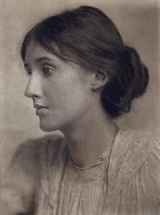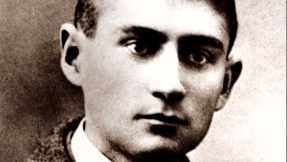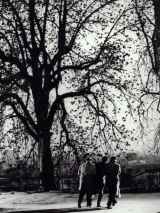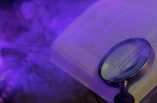Woolf versus Kafka: A Look at the Different Methods of Literary Modernism
Literary modernism is an experimental method of writing that rejects conventional elements and structures and by doing so, challenges realism’s representation of the world. There are many ways in which modernists can achieve this, most notably through experimentation with language use, plot structure and narrative perspective. Modernists focus on the experience of the world by making what has traditionally been treated as background, such as perspective and framing, the subject of their work. There is an emphasis on the chaos and incoherence of subjective experience, which produces more questions for the reader than answers. Two examples of modernists who have distinctly different styles are British novelist Virginia Woolf and German–language writer Franz Kafka. Between the two world wars, Woolf produced some of her best known and well–received works including Mrs Dalloway, To the Lighthouse and Orlando. She was part of the Bloomsbury Group, an intellectual circle of writers and artists which included her husband Leonard Woolf. Kafka was born into a German-speaking Jewish middle–class family in Prague and was employed by an insurance company while he wrote short stories in his spare time. Despite the two writer’s differing methods of fictional experimentation, they are as innovative and revolutionary as each other.

Woolf’s and Kafka’s different approaches to experimentation have been greatly influenced by what they set out to achieve in their writing. Woolf says in her diaries that writing was a therapeutic outlet that she could use to express what was some very long felt and deeply felt emotion following the deaths of her parents. By expressing these emotions she could then put them to rest. It is telling that during the period in which Woolf composed To the Lighthouse, she suffered two emotional breakdowns that interrupted her progress. Negative language is central to novel’s meaning in every major scene and negation punctuates the thought processes of nearly every character. For example, in one train of thought Mrs. Ramsay uses four negations, “but was it nothing but looks…. Or was there nothing? nothing but an incomparable beauty which she lived behind, and could do nothing to disturb?”. The use of negative language may serve as a reflection of Woolf’s mental state at the time.

While Woolf suffered from mental illness, living in her imagination was a kind of refuge. For Kafka, however, writing did not present a means of relief but rather perpetuated his anxiety. He says in letters to his friend Max Brod that he knew enough unhappiness for more than a lifetime and saw himself as a sufferer of the pain, the curse, and the shame of writing. Paradoxically, he believed that the only way to overcome this suffering from writing was by writing. Therefore, his writing could have either been the cause or the result of his unhappiness. The fictional world that Kafka creates encapsulates his ambiguous and contradictory reflections on writing and language.
One of the greatest differences between Woolf’s and Kafka’s writing is their narrative structure. Woolf experiments with the distribution of time in To the Lighthouse and Orlando. To the Lighthouse is divided into three sections, The Window, Time Passes and The Lighthouse. While the first and the third sections take place in a single day, they take up much more of the novel than the middle section, which compresses an entire decade into a few pages. This middle section contains what traditionally would be the major plot points. Rather than break up the novel by these key events, such as the deaths of Mrs Ramsay, Prue and Andrew, Woolf glosses over them by inserting them into brackets and instead structures her novel around moments of consciousness. Woolf suggests authors should trace the pattern of incidences upon the conscious no matter how disconnected and incoherent in appearance they may be. Similarly in Orlando, there is no clear or chronological structuring of time. The pacing and tempo varies as Woolf gives certain ages and experiences in Orlando’s life more prominence than others. The turn of each century doesn’t occur systematically but is marked by the transformations of Orlando. The novel begins in the sixteenth century with Orlando as a young noble boy. In the seventeenth century Orlando is an ambassador and in the eighteenth and nineteenth centuries she is female. Again, Woolf is structuring her novel according to the inward journey of a character rather than external events.
While Woolf’s narrative structure is haphazard, Kafka follows a more conventional method. The Trial covers the duration of a year, beginning and ending on Josef K’s birthday. What is interesting is that the first few chapters begin with a chronological indication of time, “the following Sunday”, “during the following week”, “in the next few days”, marking the progression of time but as the novel continues indication of time becomes more ambiguous, “one afternoon”, before it stops all together. The result of this technique is that as we get more lost and disorientated in the court process, we lose our sense of time and our bearings in Kafka’s fictional world.

Another way in which Woolf and Kafka differ is their unique writing styles and the subject matter they explore. In To the Lighthouse, Woolf focuses on the interior world through streams of consciousness and shifts in character perspective, which are rendered impressionistically. Woolf believes the essential thing, whether you call it life or spirit, can no longer be contained in what she called the ill–fitting vestments of traditional novels. She prioritises private thought, suggesting it is important in revealing the essence of character and that it can contradict what is expressed openly and publicly. An example of this is during the dinner conversation in To the Lighthouse where each character appears to be “outraged and indignant with the government about the fisherman”, yet they each have the internal thought of feeling “nothing at all”. Similarly in Orlando, Woolf experiments with elements of biography to demonstrate how internal exploration can better capture a person’s spirit than empirical evidence. She states that the world created by the vision of the artist is rarer, more intense, and more wholly of a piece than a world where people supply authentic information.
While there is a surface level of realism in The Trial, Kafka, like Woolf, tries to go beyond the symbol of words in his exploration of struggle and human existence. Kafka’s fictional world, however, carries a dreamlike quality and is full of its own rules, guidelines, and codes of conduct. The reader is removed from the fictional world by being presented with a riddled narrative that compels but resists interpretation. The enigmatic style of narrative that Kafka presents to us is embodied in the parable that the priest presents to Josef K. The reader, along with Josef K, discovers that the parable is not a lesson but a riddle where meaning is inaccessible. The priest’s summation “one does not have to believe everything is true, one only has to believe it is necessary” is a sentiment reflected in one of Kafka’s own letters to Max Brod where he writes “I think that the deeper meaning is that there is none”. It is a view that Kafka may be encouraging his readers to hold when reading his work. While Kafka creatively transforms the world in his writing, he reduces to nothing the world’s reality and truth.
Woolf and Kafka both use fictional experimentation to comment on the function of language. They believe language lacks transparency and neutrality, and as a result cannot convey the essence of intended meaning. However, they express this idea in contrasting ways. Woolf illustrates the struggle to capture meaning in To The Lighthouse through Lily Briscoe’s attempts to render a constantly changing world in her artwork. Lily grapples with her vision, which is countered by the more traditional vision of Mr. Bankes. He sees a “triangular purple shape” in Lily’s artwork and is surprised by Lily’s explanation that the shape is Mrs. Ramsay and James. For Mr. Bankes the mother and child have been “reduced to a shadow without irreverence”. What he struggles to understand is that Lily’s idea of painting is transformational rather than representational. This concept reflects Woolf’s idea of literature. Interestingly, both Woolf and Kafka create characters that embody contradictory and indeterminate natures to demonstrate how it is impossible to truly understand a character through language. Woolf demonstrates this by exploring the conflicting perceptions each character has of themselves and of each other. During the dinner conversation Lily feels pressured by Mrs. Ramsay to relent and be “nice” to Mr. Tansley despite him being the “most uncharming human being she had ever met”. This leads her to reflect that “she would never know him [and] he would never know her, [and that] human relations… were extremely insincere”. The reader too will never “know” the characters. Through shifts in perspective, they are presented with multiple versions of characters and events, eliciting many interpretations and making one true meaning impossible to decipher.

Kafka’s approach to commenting on language is the opposite. Rather than explore the dimensions and complexities of character, he decomposes them so that they lack human quality and substance, resembling cardboard cut–outs. In the final passage of The Trial, the only information the reader receives of the two assassins is that they are simply gentlemen dressed “in frock–coats, pale and fat, with top hats”. Their actions are performed in unison like puppets and they remain mute so that they appear as imitations of humans rather than the real thing. Josef K is left to ponder over their true identities from “clapped–out old actors” to the assumption that “they are tenors”. These gentlemen are nameless and faceless, as are other key characters including the advocate, the magistrate, the usher and the manager. To establish an understanding of the characters, the reader turns to the dialogue. However, Kafka prevents understanding by pairing the dialogue with gestures, which are often opaque and therefore renders the act of reading difficult. This is shown when Josef K visits Frau Grubach to speak of his arrest. While a serious conversation is taking place, the narration states that “from time to time K. buried a hand in the stockings”. Rather than reveal meaning, the comical gesture is disconnected from the dialogue and thwarts understanding. For Kafka gesture is representative of the very problem of language. Through the decomposition of characters and the use of gesture, Kafka resists access between the fictional and empirical universe so that meaning can’t be transferred and remains concealed within the text.
The contrasting approaches of Woolf and Kafka indicate that there is more than one literary modernism. Woolf emphasises in her work that the ordinary is worthy of being expressed. Kafka, on the other hand, explores the extraordinary, a world removed from the reader. While Woolf locates life in consciousness, Kafka dispossesses his characters of such life. Nevertheless, both authors challenge conventional ideas about literature and are successful in their individual methods of fictional experimentation.
What do you think? Leave a comment.











Metamorphosis was a surprise for me. I had never read Kafka even though it was recommended to me a lot of times, so I didn’t know what to expect. Now I’m looking forward to reading his other works.
I would recommend The Trail as one of my favourites from Kafka 🙂
*The Trial sorry!
I’ve spent the last couple of years catching up on famous pieces of literature that, for whatever reason, I never got around to before, especially those that are ubiquitous cultural touchstones. Both Kafka and Woolf land in this category.
Yes they are definitely two very interesting writers!
When I was in my 20s I read To the Lighthouse and didn’t like it very much. I don’t remember much about the experience, but it put me off reading stream of consciousness novels in general and Virginia Woolf in particular. More recently I’ve been trying to overcome some of my early literary prejudices, often by listening to audiobook versions of books I’m not convinced I’ll like, preferably read by a narrator I love. Whether age has changed my literary tastes or simply made me more patient, this has generally been a positive experience.
That’s great to hear! I’m glad you’ve tried it again in different ways.
Woolf was a brilliant writer.
She sure is!
Interesting article! I’ve never read Woolf, but I’m pretty familiar with Kafka and am now looking forward to checking out To the Lighthouse and comparing these two Modernisms. I hesitate to use the word “dreamlike,” though, as there’s a far more direct connection between Kafka’s world and reality than that term might imply. The universe presented in The Metamorphosis, for example, isn’t totally removed from the real world: Gregor Samsa’s situation is rather a direct reflection of reality, or, more specifically, a reflection of the /underlying assumption/ of this society, namely that without work (the citizen’s most valued function in modern capitalism) one is transformed into a parasite. Similar connections to reality are to be found in many of Kafka’s other stories. Just a thought.
Fair point, and I’m glad you found the article interesting 🙂 good luck with Woolf, I hope you enjoy her style.
After reading your analysis of the differences in Woolf and Kafka, I find I better understand my own preference for Woolf, especially in her, as you put it, exploration of “the dimensions and complexities of character” rather than Kafka who “decomposes them so that they lack human quality and substance, resembling cardboard cut–outs.” The inner lives of Woolf’s characters are so vivid I just can’t put her books down, but I think I will try Kafka again sometime soon.
I’m glad I could help 🙂
It is astonishing how perfect each of Kafka’s sentences are. What’s just as striking is that the prose, humor and subject matter are just a relevant to me as they might have been to a reader when it was published in the early 1900’s.
He is an incredible writer, and I’m so glad I came across him!
Could you tell me how can we derive woolf’s methode ,please?
I think Woolf was a truly talented prose-artist. Even in her private diaries there is a publishable wit, insight and grace that is so tender and beautiful, at times darkly beautiful, but always composure and fineness.
Couldn’t agree with you more!
Excellent analysis. I have not read Kafka, but I was able to follow along quite well, and now I want to check out his work! I have read Woolf’s “To the Lighthouse,” and it is probably my favorite modernist work. I love that you explore Woolf’s talent for developing character through private thoughts. I think this is an excellent modern technique that should be used more often these days. It’s a great way for a reader to really connect with an author and his/her characters. In the words of David Foster Wallace, “We’re existentially alone on the planet. I can’t know what you’re thinking and feeling and you can’t know what I’m thinking and feeling. And the very best works construct a bridge across that abyss of human loneliness.” So kudos to Woolf for building a hell of a bridge.
Also, I like your comparison of the authors’ different motivations for writing. It reminded me of a mantra: “Write a little every day, without hope and without despair.”
Thanks so much. That is my favourite part of Woolf’s work – how she explores the inner minds of her characters because what we think isn’t necessarily always consistent with what we say or do. I love how she explores the complexities of character and how difficult it is to truly understand who we are. Also great quote!
There is definitely something almost perfection about Virginia Woolf’s modernism. Her stream of conscious writing seems to be more aromatic than Proust (if that is possible) and goes down easier than Joyce. While she didn’t write the massive ‘Remembrance of Things Past’ or the revolutionary ‘Ulysses’, her short novels seem – pound for pound – to stand up to these greats. Mrs Dalloway is a Madeleine that bites back and most certainly a novel that would make God “a shout in the street” after reading.
She is definitely a stand out in her own right 🙂
I think The Waves is as good as Ulysses or In Search of Lost Time (or at least Swann’s Way). It’s probably my favourite modernist book.
Thanks for an interesting article! I’ve never ready Woolf’s work, but based on your description it sounds like I would get frustrated with the timeline ambiguity. Was that your experience in reading “To the Lighthouse” for example?
I would say give it a go if you are interested. It does take some adjusting, especially if you aren’t prepared for it – it may throw you a little bit, but you will adapt to her style the more you read and get into the novel. Although it might be frustrating, it is definitely necessary for the novel to work the way it does.
Great article! I have not read Kafka, but I have just finished reading “To The Lighthouse.”
I find both authors’ approaches to literary modernism quite interesting. In their works, one can recognize the commonality that makes these authors modernists. Their processes of experimentation with language–exploration or decomposition–describe a modernist principle: everything is broken and fragmented. Woolf is examining the fragments and putting them back together in a new way; on the other hand, Kafka is further breaking apart the pieces of characters or language.
I look forward to reading Kafka–I’m moving him to the top of my to-read list.
Hi! I couldn’t find any e-mail adress to get in contact. I’m from Turkey and we’re releasing a literature magazine called ‘Kafka Okur’ in Turkey. We are planning on a Virginia Woolf special edition and when i was making a research for it on internet, I came across with your well-written article. We would like to translate it for the magazine and give your reference as the writer, if you allow 🙂 This is our website: http://www.kafkaokur.com/ You can check it out.
facebook.com/kafkaokur
twitter.com/kafkaokur
instagram: kafkaokur
pinterest.com/kafkaokur
plus.google.com/+kafkaokur
behance.net/kafkaokur
How can we derive Woolf’s method ? please help me
please help me ,to derive Woolf’s estimation
Researching for my uni exams on Modernism, this was incredibly useful and pointed, well done.
I’m really, really, really not a fan of modernism, or specifically, the Virginia Woolf style of modernism. I read Mrs Dalloway for a uni class and after working with it I developed an appreciation for it. But, I could not help but be frustrated by the fractured structure. I don’t doubt that it is probably genius, but it simply is just not the style for me.
Interesting article, indeed!